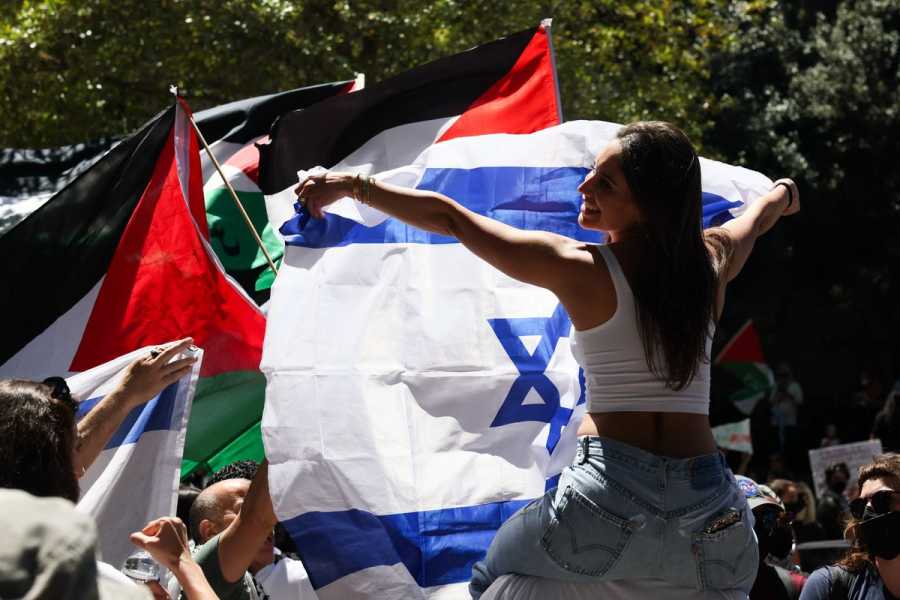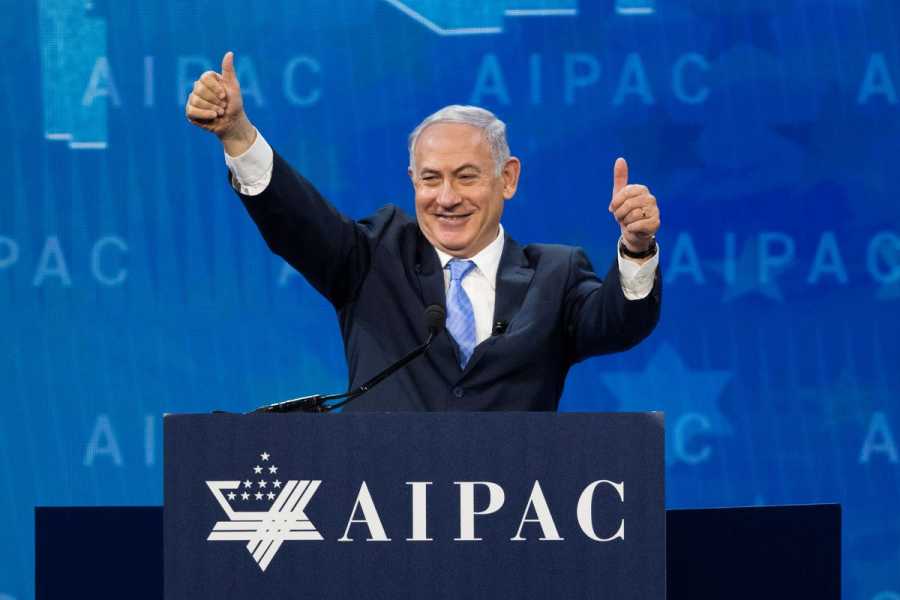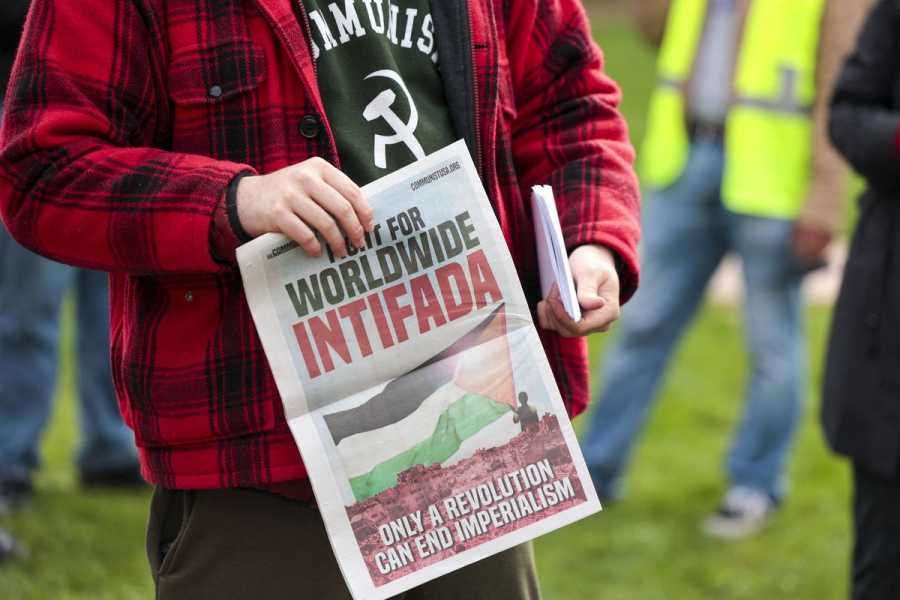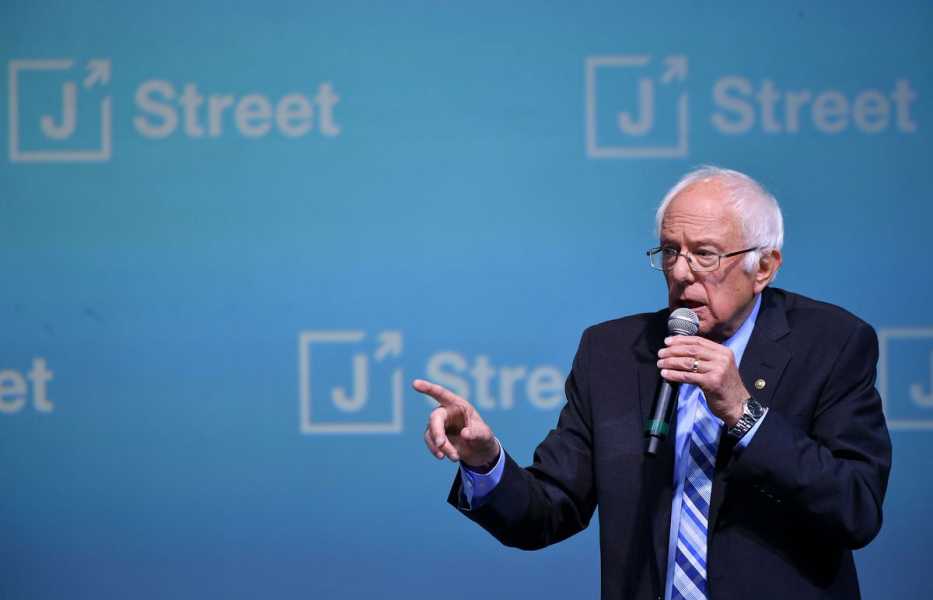It’s time to take back the Israel-Palestine debate from the radicals on both sides.

Israeli and Palestinian flags on display in protests at UCLA on April 28, 2024 in Westwood, California. Robert Gauthier/Los Angeles Times/Getty Images Zack Beauchamp is a senior correspondent at Vox, where he covers ideology and challenges to democracy, both at home and abroad. Before coming to Vox in 2014, he edited TP Ideas, a section of Think Progress devoted to the ideas shaping our political world.
You may have heard of Shai Davidai, the Israeli professor at Columbia University who has launched a crusade against the school’s pro-Palestinian protestors.
He’s rocketed to fame by calling students terrorists, comparing himself to Jewish victims of Nazi Germany, and demanding the National Guard forcibly break up the student encampments. After the NYPD stormed Columbia’s campus on Tuesday night, arresting hundreds of students, he retweeted a message blaming the events on “a circus of narcissists, egged on by irresponsible faculty.” (Indeed.)
Davidai, like many of the loud pro-Israel voices in the national debate, is casting blanket aspersions on students who are protesting for good reasons. Well over 30,000 Palestinians are dead, many of whom are children; the devastation is so complete that a fully accurate death toll is now impossible. There is no good moral or strategic justification for Israel’s scorched-earth approach, which currently risks strengthening the terrorist group Hamas’s strategic position in the long term. Given that billions of American dollars are underwriting this atrocity, it’s easy to see why college campuses are in uproar.
But while the majority of students are genuinely motivated by justifiable outrage, a smaller faction have gone to a much darker place: going so far as endorsing Hamas’s murder of Israelis and calling for the violent destruction of Israel. All too often, they are tolerated by — or even members of — protest leadership.
Students for Justice in Palestine, the biggest national force behind the college protests, has described Hamas’s mass slaughter on October 7 as “a historic win for the Palestinian resistance.” Khymani James, one of the leaders of the Columbia protests, publicly fantasized about murdering “Zionists.” University of Pennsylvania students chanted in support of Hamas’s military wing (“al-Qassam, make us proud, take another soldier down”). An organizer at UC-Berkeley distributed pamphlets explaining, in his words, how the Hamas attack “was an act of decolonization.”
The reciprocal extremism on college campuses, egged on by irresponsible university administrators who have heightened tensions by calling in the cops, is a window into a reality everyone knows: The American conversation about Israel-Palestine is broken.
Anyone who even touches the issue knows it’s toxic. The conversation is dominated by extremists who aggressively police the slightest misstep and punish internal dissent, a longstanding dynamic supercharged in recent years by social media. Recently, a prominent person in American politics privately told me that they see engagement on the topic as a no-win proposition. About half of all young American Jewish adults have stopped talking to someone they know over the conflict.
There are deep reasons why America’s Israel-Palestine discourse is so dysfunctional. They range from the pro-Israel movement’s embrace of Israeli extremists to the pro-Palestinian movement’s radical-chic culture to the uninspiring alternative on offer in official Washington. Put together, they create an environment where the loudest and most influential voices on each side are all too often the most aggressive and uncompromising ones.
In such an environment, the most reasonable people on each side — the ones that recognize that neither Israelis or Palestinians are going anywhere, and that peace can only be found through negotiated compromise — are sidelined. They are getting very little help from some alleged supporters of a two-state solution in Washington, where an insipid and out-of-touch approach does its own work to discredit the center.
Understanding these dynamics can help us grasp the dueling narratives around the campus protests. But more importantly, it can help us comprehend why the space for creating pro-peace coalitions seems to have shrunk — and what can be done to rebuild it.
Inside the pro-Israel movement’s radicalization
In the United States, the Israel-Palestine debate has gone through a long process of polarization and radicalization that has only gotten worse in recent years.
I know the dynamics on the pro-Israel side firsthand: When I was in college in the late 2000s, I was the president of my university’s pro-Israel campus group. I abandoned the post shortly after I got into a public argument with one of my own members after he endorsed West Bank settlement, an enterprise that I always thought was both morally wrong and politically suicidal.
As Israel’s government moved more and more to the right, increasingly captured by the anti-Palestinian settler movement, the pro-Israel movement moved with them — leaving no place for people like me. Today, I spend much of my professional life criticizing Israel from the anti-occupation left.
There are deep reasons why the pro-Israel movement is the way that it is. When I used to attend closed-door events for student activists held by AIPAC, the leading American pro-Israel lobby, they would tell us that they do not see second-guessing the Israeli government as part of the job description. Israel’s leaders determined what was in the country’s best interests; AIPAC and its activists worked merely to support that agenda on Capitol Hill.

Israeli Prime Minister Benjamin Netanyahu speaks at AIPAC’s Policy Conference in DC in 2018. Michael Brochstein/SOPA Images/LightRocket/Getty Images
This “we don’t judge” policy, rooted in an uncompromising version of Zionism that grants little weight to Palestinian rights, has turned AIPAC and its allies into lobbyists for colonialism. In this, they have enthusiastically linked up with outright right-wing extremists like Pastor John Hagee, the leader of Christians United for Israel. The pro-Israel movement, once comfortable with a two-state solution when Israel’s leadership supported it, is now doing everything in its power to back a government bent on destroying it.
What was once called “liberal Zionism” — the view, held by a majority of American Jews, that Israel has a right to exist but no right to occupy Palestinian land — no longer has a place in the organized pro-Israel movement. AIPAC and other mainstream pro-Israel groups treat the smaller liberal Zionist organizations, like J Street and Americans for Peace Now, as mortal enemies.
The pro-Israel movement’s current job is mainstreaming Israeli extremism. And it has long been willing to threaten people’s careers and livelihoods — through tools like a public blacklist of pro-Palestinian scholars and students — in order to accomplish that end.
When “pro-Palestine” becomes “anti-peace”
The pro-Palestinian movement in the United States is far weaker than its pro-Israel twin. There is no Palestinian AIPAC capable of leading $100 million campaigns to unseat members of Congress. But as Americans’ sympathy with Palestinians continues to grow, the movement is poised to wield greater influence down the line — making its own radicalization process a subject of real concern.
In his book The Movement and the Middle East, historian Michael Fischbach argues that the 1960s-era radical left in the United States fractured over Israel-Palestine, and the events of that period determined “where progressive Americans stand on these issues today.”
During the Cold War, the most hardline factions took an uncompromising pro-Palestine stance, seeing armed Arab struggle against Israel as part of the global fight against Western imperialism. More moderate groups, by contrast, supported Israel in existential conflicts like the 1967 Six-Day War. With extreme left factions playing a disproportionate role in shaping pro-Palestine activism, a significant chunk of the movement took on a similarly radical cast.
In this, they were aided by the censorious efforts of the pro-Israel extremists, who worked to turn “Palestine” into a dirty word in mainstream American political discourse. This meant that, for many years, young people passionate about the Palestinian cause were drawn toward far-left factions who called for Israel’s destruction, lionized Palestinian violence, and saw the two-state solution as a sellout compromise.

A University of Washington student and Revolutionary Communist International member holds a publication during an on-campus protest. Jason Redmond/AFP via Getty Images
“It became a far-left issue because it was so stigmatized,” says Hussein Ibish, a senior resident scholar at the Arab Gulf States Institute in Washington. “You had to be on the far left … in order to fit being a champion of the Palestinians into your professional career path.”
In the 2000s, Ibish helped found the American Task Force on Palestine (ATFP), a DC-based group that aimed to promote the Palestinian cause from a pro-peace standpoint. He recalls unremitting hostility from both the AIPAC-style pro-Israel groups and the existing far-left pro-Palestinian infrastructure. ATFP was chronically short of money, maxing out at three full-time policy staffers. It ultimately shuttered its doors in 2016.
“We failed,” Ibish says, “because no one supported us.”
Today, the Palestinian cause is far more mainstream than it once was — especially among young people and liberals. This is primarily the result of Israel’s rightward political drift: As Israel continues West Bank colonization and pulverizing Gaza, the injustice of the status quo becomes increasingly hard to deny.
Yet far-left maximalists still wield disproportionate influence in the pro-Palestine activist and intellectual communities. This is why prominent voices on the issue today — like the US Campaign for Palestinian Rights, “dirtbag left” podcasters, the president of the Council on American-Islamic Relations, and academics like Judith Butler — have been able to praise or sanitize Hamas’s actions on October 7 without meaningful pushback on their own side.
Breaking the radicalization doom loop
The most radical voices on both sides are not representative of broader public opinion. Polling shows that Americans favor a two-state solution by a roughly 20-point margin. About 30 percent support Israeli annexation of the West Bank; only 5 percent believe that Hamas’s action on October 7 was acceptable. A sizable majority of American Jews are uncomfortable with actions of the Israeli state; only a small minority of American Muslims endorse terrorism against Israelis.
The radicalism you see in the news or on social media reflects neither the mass public nor the views of Americans from the most affected groups. Instead, it reflects the views of the extremely engaged. Their every utterance or action is magnified by their extreme allies and enemies alike, making it seem as if the worst and most marginal voices stand in for everyone else.
Extreme activists polarizing public debates is not an uncommon phenomenon: Look, for example, at the way anti-abortion activists or climate change radicals push well beyond what the average person in their coalition supports. Once people get locked into mutually hostile camps, the rank-and-file becomes more tolerant of any kind of extremism directed at their opponents — and less tolerant of any internal voices calling for compromise and mutual dialogue. The more radical one side appears, the more the other radicalizes in response.
What’s happening on Israel-Palestine is an especially bitter version of this standard political polarization doom loop.
So what can be done? The obvious answer is to make space for pro-peace voices. And that starts, counterintuitively, by creating room for more challenges to what appears like a moderate Washington consensus — but in reality is a debate heavily tilted toward Israel.
Both major American political parties have long been staunchly pro-Israel. The Republican version of this is rabid, increasingly aligned with Netanyahu and his far-right government. The Democratic version is pallid, mouthing empty support for two states and bromides about shared liberal values even as Israel starves Palestinian children. The handful of dissenters, including Rep. Alexandria Ocasio-Cortez (D-NY) or Sen. Chris Van Hollen (D-MD), have been relentlessly attacked as anti-Israel or even antisemitic (though there’s more room for them today than there has been in the past).

Sen. Bernie Sanders speaks during the 2019 National Conference hosted by J Street, a pro-peace lobby in Washington. Mandel Ngan/AFP/Getty Images
When the establishment seems out of touch with reality, extremism tends to flourish. Republicans may be fine with that, but Democrats clearly are not. If they wish to defang campus radicals on their left flank, they need to create more space in the system for taking legitimate concerns with Israel’s behavior seriously. Cease unconditional support for the war in Gaza and start thinking more creatively about how to pressure Israel into taking up Palestinian President Mahmoud Abbas’s recently reiterated offer to negotiate.
As horribly polarized as the Israel-Palestine debate seems, there actually is space for productive coalition-building that can contribute toward the cause of peace. Let’s not let the extremist voices in the discourse distract us from that fact.
Sourse: vox.com